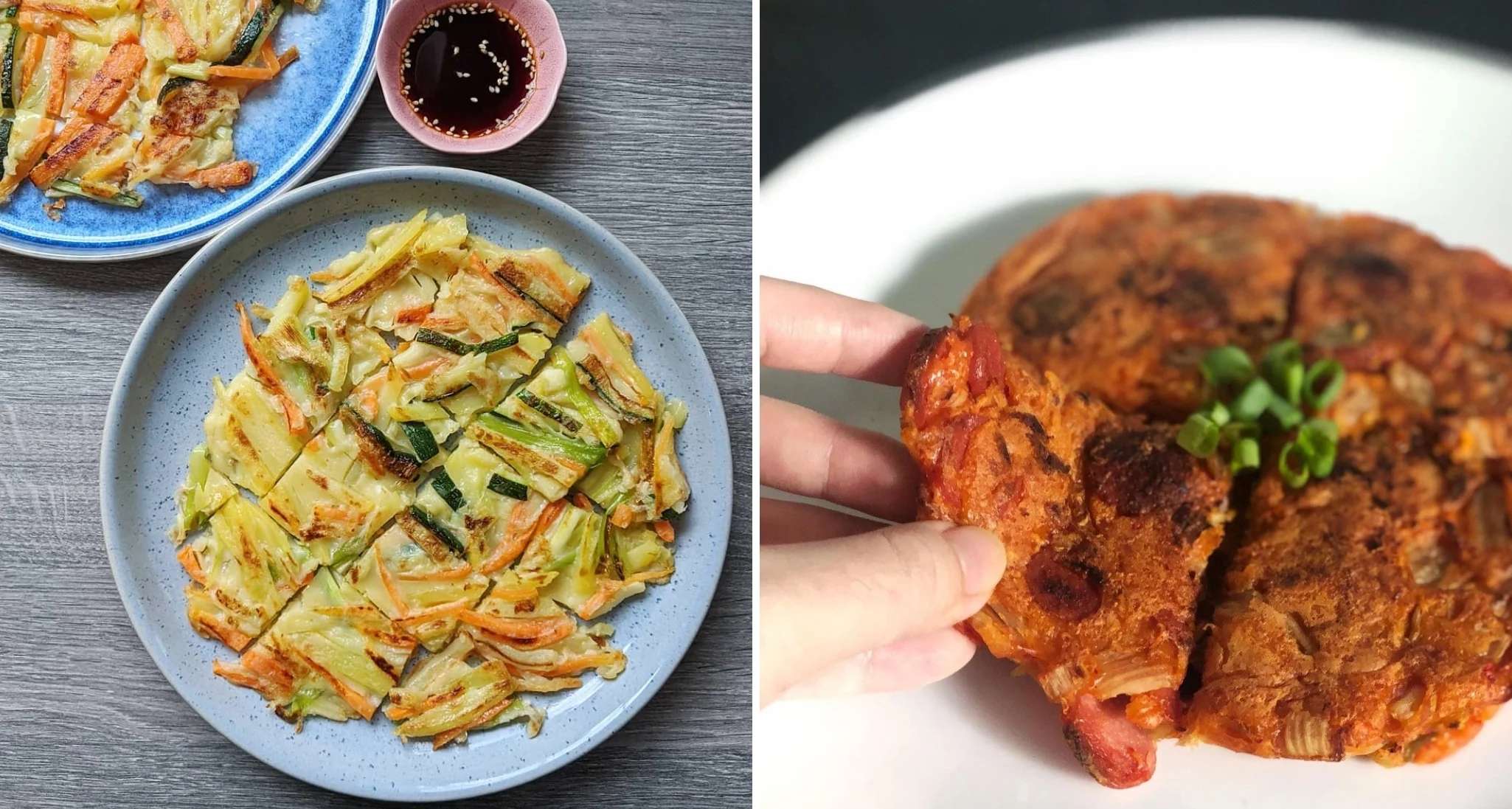[Updated 7 July 2021]
Step into any Korean restaurant and you'll probably see a section of the menu dedicated to savoury pancakes. The most famous among these is pajeon (scallion pancakes), though you'll often find kimchijeon (kimchi pancakes) and haemul pajeon (seafood scallion pancakes). These crispy pancakes are usually served with a dipping sauce and they make for a simply delicious side dish (or even main meal!). It's also super simple to make halal Korean pancakes at home from scratch, and we'll show you how! We have an easy Korean pancake mix recipe, and we'll even go through all the popular variations (Korean scallion pancake, Korean seafood pancake, and kimchi pancake) so you know exactly how to make them.
Korean pancake mix (buchimgaru)
For Korean pancakes, you need a pancake mix called buchimgaru. Most Korean households by ready-made buchimgaru sold at the supermarket - in fact, since Korean pancakes are so popular on our shores as well, you can often find Korean pancake mix in supermarkets! For Malaysian readers, you can even find halal-certified Korean pancake mix produced locally by the brand Noraini's. However, most of the other brands are not halal-certified and depending on the ingredients list, it may be hard to ascertain if it's fully Muslim-friendly due to emulsifiers or stabilisers included in the mix. But don't worry, it's actually not that hard to just whip up your own at home!
For 1 batch of Korean pancake mix:
- ¾ cup all-purpose flour
- ¼ cup rice flour
- 2 tbsp corn starch or potato starch
- ½ tsp salt
- 1 tsp garlic powder (optional)
To note, buchimgaru often includes a mix of flour, rice flour and corn starch or potato starch to give the pancakes a crispy exterior plus a nice chewy interior. You can play around with the ratios of the different flours to suit your own preference ?
Korean pancake recipe
Ingredients (makes 2 large pancakes):
- 1 batch of Korean pancake mix (per the amounts above)
- ¾ ice water
- 1 cup of filling (see Variations section below for ideas)
- 1 egg, lightly beaten
- Oil for frying
For the dipping sauce:
- 1 tablespoon soy sauce
- 2 to 3 teaspoons rice vinegar
- 1 tablespoon water
- ½ tsp sugar or honey
- A pinch of gochugaru (Korean red chili pepper flakes, or substitute with chilli powder) (optional)
- 1 scallion, thinly sliced (optional)
- ½ tsp roasted sesame seeds (optional)
Directions:
- Prepare your fillings (see Variations section below for the different pancakes). For fresh ingredients, try and make sure they are as dry as possible. Chop into your desired size.
- To a large bowl, add the the pancake mix, ice water and egg. Whisk to combine into a batter - it should be a slightly runnier than conventional Western pancake better and it pours easily from a spoon. If your batter is too thick, add more ice water (1 tablespoon at a time) until it reaches the right consistency.
- Add the filling ingredients to the pancake batter (see notes for alternative).
- Heat a non-stick pan over medium high heat and add about 2 tablespoons of oil to the pan.
- Once the oil is nice and hot, ladle half the mixture into the pan, gently spreading it to make a large thin pancake - make sure the pancake has a good amount of the filling distributed evenly across. Let it cook until the bottom is golden brown, about 4 - 5 minutes.
- Flip the pancake carefully, and let it cook on the other side for another 3 - 4 minutes. Transfer to a plate lined with paper towel. Add more oil to the pan, then repeat with the remaining half of the mixture.
- Make the dipping sauce by adding all the ingredient to a small bowl and mixing well. Serve alongside the pancakes.
Variations
- Pajeon (scallion pancake): Use scallions that are washed and cut into your desired size.
- Haemul Pajeon (seafood scallion pancake): Half-and-half mixture of seafood and scallions.You can use any combination of seafood you like - this includes fresh shrimp, squid, mussels, oysters, crab meat, etc. Cut it to bite sized pieces before adding to the pancake batter along with scallions.
- Kimchijeon (kimchi pancake): Thinly slice your kimchi. In addition to adding this to your batter, you can also add 1 - 2 tablespoons of the kimchi juice (reduce the amount of water by the same amount).
- Yachaejeon (vegetable pancake): Instead of scallions, feel free to substitute any veggies you have on hand, such as zucchini, carrot, chilies, leeks, etc.
- Others: Don't be afraid to switch up the fillings with whatever you have on hand! From canned tuna and minced meat to sweet potato, mushrooms and more, the possibilities are endless and you can't really go wrong!
Notes:
- There are varying techniques to cook your pancake. Instead of adding your filling ingredients straight to the batter, you can also add them to the pan first separately (so it can fry up and get crispy) before adding the batter on top. You can also add some batter first, then arrange the filling ingredients where you want them exactly placed on top before adding more batter to cover. We find the method in our recipe tends to be the easiest though, hence why we used it in our recipe.
Korean pancakes are a super yummy dish that's also a great way to use up any leftovers in your fridge - once you whip up your Korean pancake mix the possibilities are endless! Make your own pajeon, kimchijeon, hameul pajeon or any other variation and enjoy. For more cooking inspirations, check out these easy halal Korean recipes you should try making at home.


